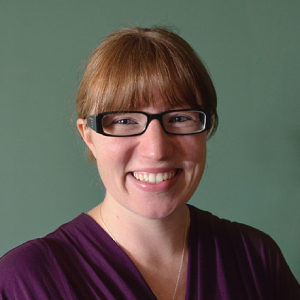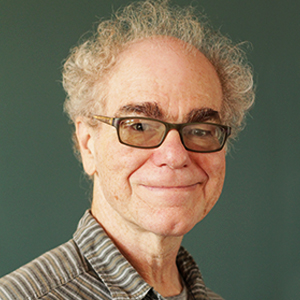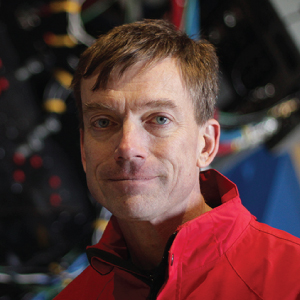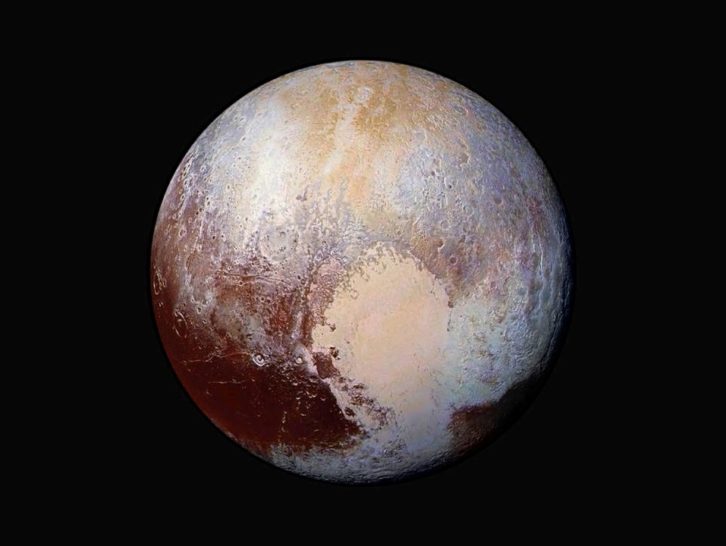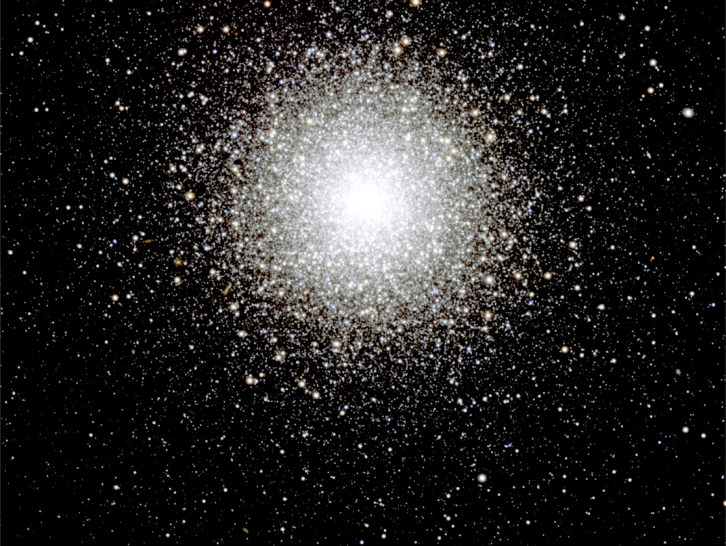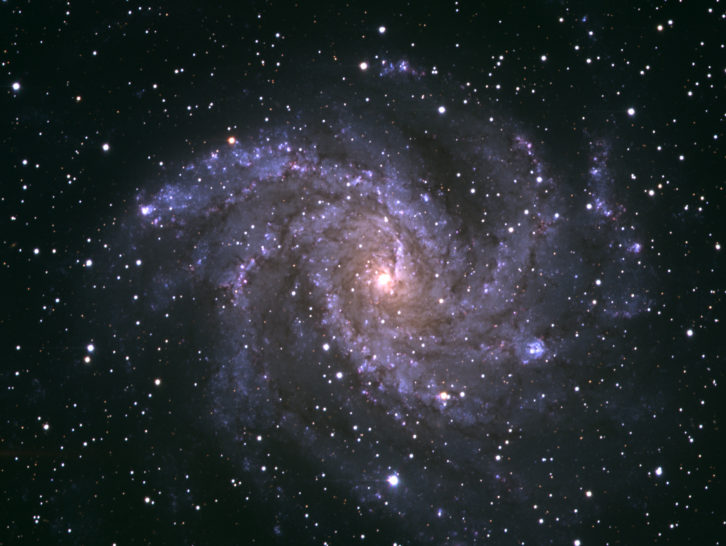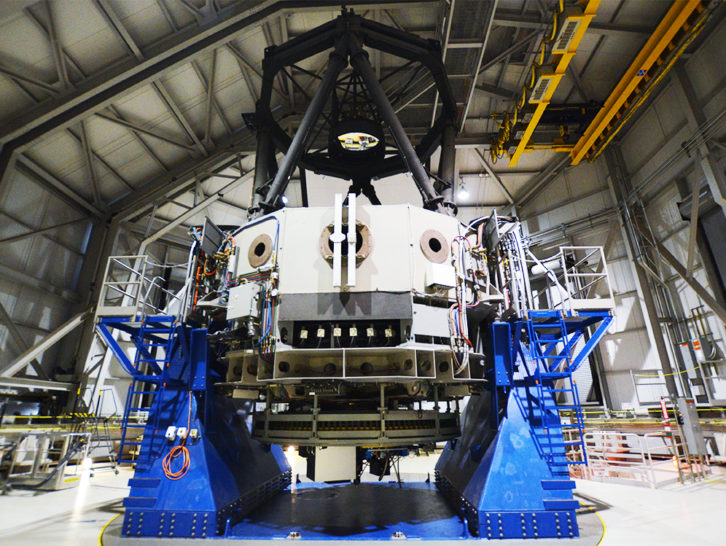Stellar Astrophysics
Massive Stars
Massive stars are extremely rare, but they serve as the “cosmic engines” that power the Universe, proving most of the ionizing radiation and mechanical energy of the interstellar medium.
They also forge most of the heavier elements: the carbon in your body and the oxygen that your breathe were all made in the interiors of massive stars. Our research group studies massive stars in the nearby galaxies of the Local Group, such as M31, M33 and the Large and Small Magellanic Clouds. We use a combination of imaging and spectroscopy to determine the physical properties and populations of these stars, and compare their results with current stellar evolutionary theory. If the observations and theory match, we celebrate! If they don’t, then it is time to figure out how and why they differ.
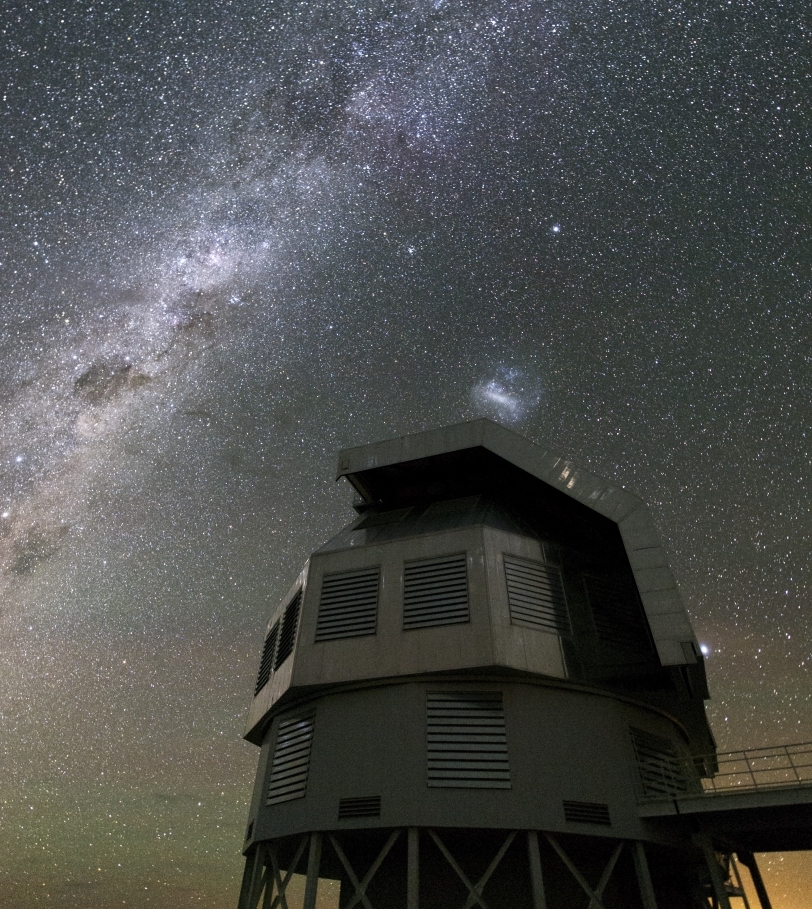
The 6.5-meter Baade Magellan telescope located at Las Campanas Observatory in northern Chile. The massive stars research group is privileged to be able to use this remarkable instrument in their studies of stars in the Large Magellanic Cloud, visible directly above the telescope in this picture by Kathryn Neugent.
Binary red supergiants
Dr. Kathryn Neugent‘s most recent work has focused on red supergiants (like Betelgeuse!). Such stars have burned through their hydrogen and are now just hundreds of thousands of years away from exploding as supernovae. In particular, Neugent has better constrained the number of red supergiants that are in binary systems with a companion star. When she started this work a few years ago, there were only a dozen such systems known. Using spectra obtained on the 6.5-m MMT near Tucson, AZ, the 6.5-m Magellan telescopes at Las Campanas, and the 8-m Gemini telescope in Hawaii, she has now found over 250 new red supergiants in binary systems! She plans on continuing to study these systems, as well as single red supergiants that have possibly merged with their companions, using the LDT.
Learn more about Dr. Kathryn NeugentMassive star evolution
Dr. Philip Massey is currently working on combining our knowledge of the stellar populations of the Wolf-Rayet and red supergiant populations as a diagnostic of the influence of binarity on massive star evolution. Evolutionary models predict very different results for the relative populations of these stars in nearby galaxies depending upon whether the WRs were stripped by stellar winds or as the result of binary interactions. He is also using the Hubble Space Telescope to follow-up on a peculiar Wolf-Rayet binary star that he, Neugent, and other colleagues discovered several years ago in the Large Magellanic Cloud. They believe this star may be the first clear example of a “stripped binary,” a Wolf-Rayet star that has been formed through binary evolution.
Learn more about Dr. Phil MasseyWolf-Rayet stars
Erin Aadland‘s thesis work involves the enigmatic Wolf-Rayet stars. These are stars whose spectra are characterized by broad, strong emission lines formed in outflowing stellar winds. These are basically the bare cores of very massive stars, as their outer layers have been stripped away. Aadland’s research is focused on how these stars evolved. She works on uncovering the answer by modeling the spectra of these stars. The physical parameters we find through modeling can tell us whether Wolf-Rayet stars can evolve by themselves (outer layers stripped solely by stellar winds) or if they require a companion star. Aadland also looks at spectra from different Wolf-Rayet phases to determine how these stars evolve right before they go supernova.
Learn more about Erin AadlandLow-Mass Stars
Low-mass stars, also known as ‘M-dwarfs,’ are the most common type of star in the Universe – approximately 70% of all stars are in this mass range, from 0.6 solar masses (Msun) down to the hydrogen-burning limit of 0.08 Msun. They are also the longest-lived stars, with lifetimes of 20 billion to 100 billion years or more; their small sizes mean they burn through their nuclear fuel at a miserly rate, and they shine dimly but steadily. No M-dwarf that has come into existence in our Universe has ever died; they’re still too young. Given the degree to which these objects are ubiquitous throughout our Galaxy and others, M dwarfs are particularly interesting to astronomers as hosts of planets that could potentially bear life. The small size of these stars means its somewhat easier to find those planets about them, further increasing their research appeal. Our group at Lowell has been working to characterize these objects – their sizes, distances, temperatures – which opens up insights into the stars as well as any planets they might host. A particular specialty here has been characterizing the multiplicity rate of these stars: roughly half of the stars in the sky have a second star next to them (our own sun is a solo loner), and this could affect the planet hosting rate. For low-mass stars this rate is somewhat lower, but it is not well-measured nor understood.
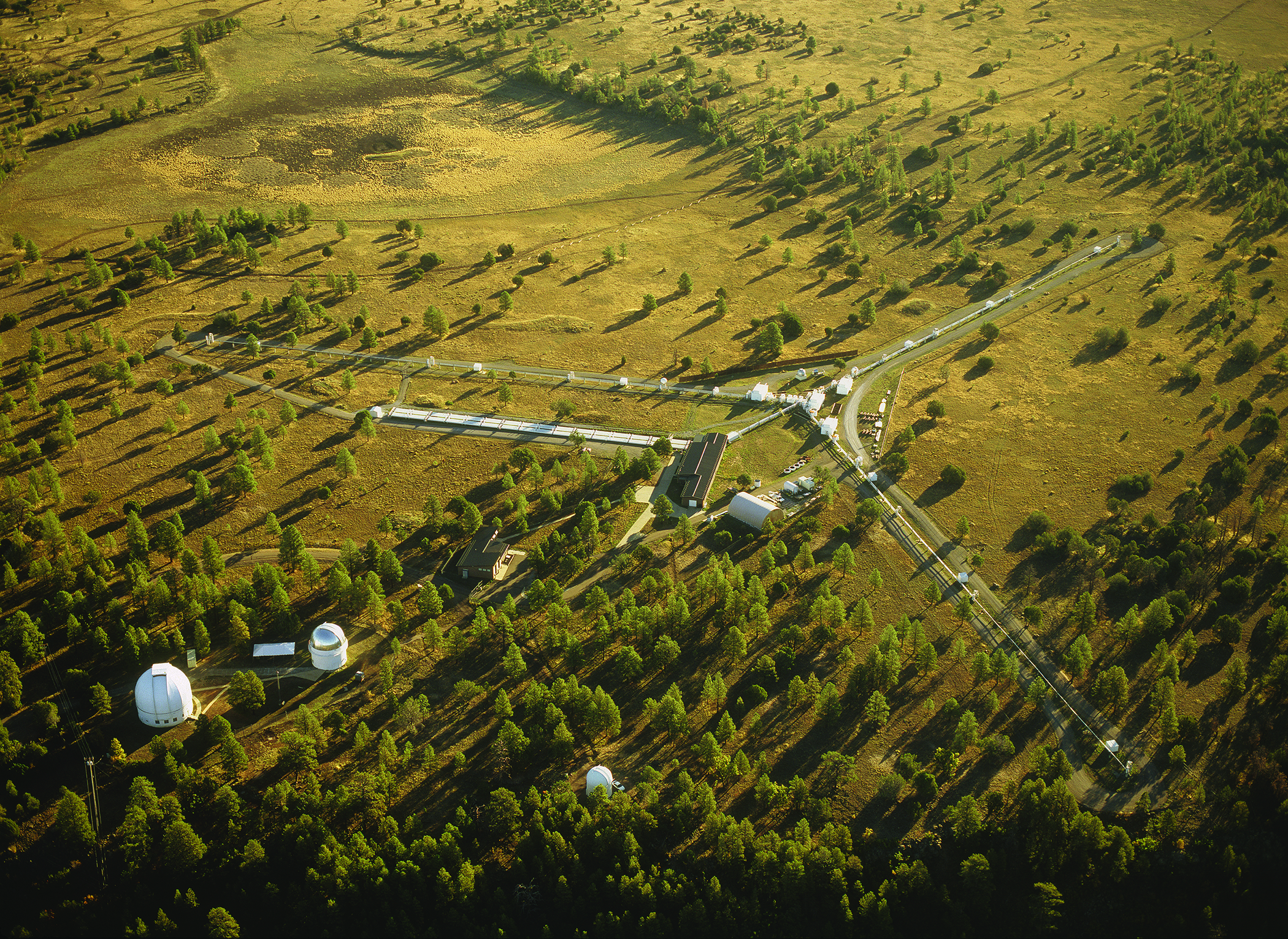
The Navy Precision Optical Interferometer (NPOI), located at Lowell Observatory's Anderson Mesa campus.
Chasing stellar parameters
Dr. Gerard van Belle‘s focuses on fundamental stellar parameters – the sizes, shapes, masses, distances, and temperatures of all types of stars. Towards that end, he has specialized over the course of his career in the construction and use of ultra-high-spatial resolution instrumentation. These instruments include long-baseline interferometers – arrays of individual telescopes that link together to act like a single, larger telescope – and speckle interferometers, which take high-speed movies with large individual telescopes of on-sky objects to freeze out atmospheric turbulence, and allow recovery of diffraction-limited imaging. Dr. van Belle’s stellar research has characterized main sequence stars, common evolved stars such as giant stars and supergiant stars, and other more exotic evolved stars such as carbon stars and Mira variables. Currently he is focusing on low-mass M-dwarf stars, which make up over two-thirds of the population of stars in the universe.
Learn more about Dr. Gerard van Belle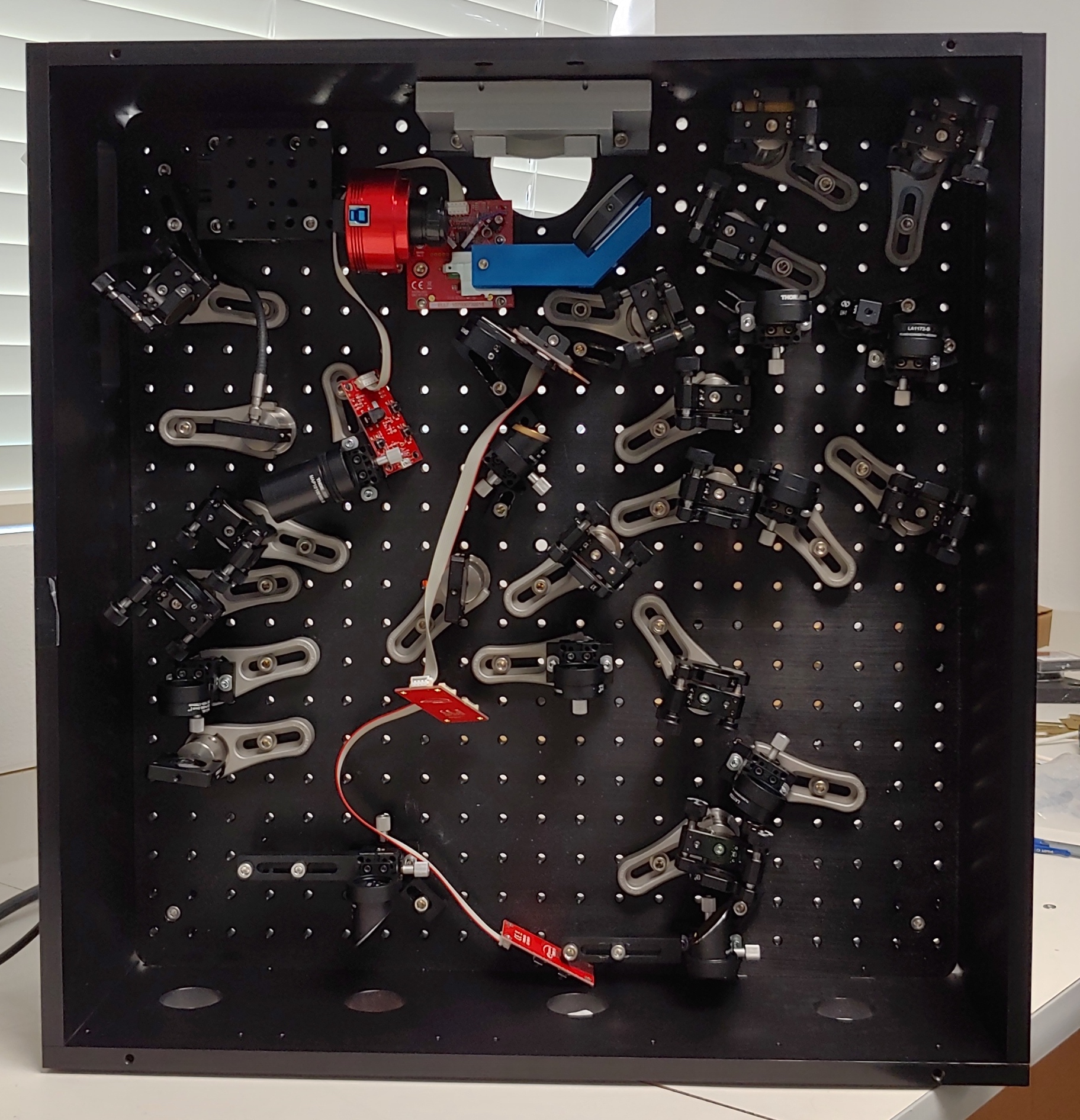
The new Lowell Discovery Telescope instrument QWSSI is being used to search for companions to nearby M-dwarf stars. This speckle camera was built at Lowell by the low-mass stars group, and allowing very high spatial resolution images to be obtained at both optical and near-infrared wavelengths.
Cool stars
Catherine Clark studies the smallest, coolest, faintest stars: the M-dwarfs. She utilizes speckle and long-baseline interferometry to find companions to these stars within multi-star systems. The multiplicity of M-dwarf systems has implications not only for the formation and evolution of these low-mass stars, but for exoplanet studies as well, as unresolved companions can lead to erroneous planetary properties and false positives for exoplanet detection.
Since she began her PhD, she has been working on the Pervasive Overview of Kompanions of Every M-dwarf in Our Neighborhood (POKEMON) survey, which has inspected every M-dwarf out to 15pc, with some brighter targets to 25pc, using speckle interferometry. This survey has resulted in speckle images for 1151 nearby M-dwarfs, and the detection of over 30 new companions to these stars! Additionally, she and her advisor Dr. Gerard van Belle have recently designed, built, tested, and commissioned a new speckle camera, the Quad-camera Wavefront-sensing Six-channel Speckle Interferometer (QWSSI), for the 4.3-m Lowell Discovery Telescope. She is now working to follow up M-dwarf TESS Objects of Interest (TOIs) with speckle imaging, and close binary systems with long-baseline interferometry.
Learn more about Catherine Clark
This GIF shows the movement of a wide binary consisting of GJ 362 and 360. By taking two images of stars at two different times and “blinking” them back and forth, we can identify stars that have a common motion and might be wide binaries as is shown here.
Wide binary systems
Zachary Hartman‘s interests lie in examining large datasets for binary stellar systems, working with binaries of mostly low-mass stars and software development. Much of his work has been focused on wide binary systems which have separations hundreds to thousands of times that of the Earth and the Sun.
A graduate student from Georgia State University working with Dr. Sébastien Lépine, he has identified over 100,000 wide binary systems from the second data release of the Gaia catalog using statistical methods. This catalog of wide binaries, called SUPERWIDE, is available to the public.
While interested in everything that involves wide binaries, the key question he has been studying for his PhD thesis is how many of these wide binaries actually consist of three or more stars. Determining this can potentially lead to more information on how these systems formed. To this end, he has been involved in observing these systems looking for third stars in these wide binaries. Most of this follow-up has been using speckle imaging to detect close companions. Since arriving at Lowell Observatory in 2018 as a Lowell Predoctoral Fellow, he has joined the team of his advisor, Dr. Gerard van Belle, and has been involved in the deployment and testing of a new speckle camera, the Quad-camera Wavefront-sensing Six-channel Speckle Interferometer (QWSSI). In particular, he is in charge of developing the pipeline for reducing the data that comes from QWSSI. Along with this, he is currently examining data from TESS to look for planets and eclipsing binaries around wide binaries.
Learn more about Zachary HartmanThe Sun and Solar-Like Stars
Dr. Jeff Hall and his Lowell collaborators Brian Skiff, Len Bright, and emeritus astronomer Dr. Wes Lockwood have been studying the cycles of the Sun and Sun-like stars for 25 years.
Our Sun and stars like it have a steadily waxing and waning cycle of activity arising from changes in their dynamic and complex magnetic fields. In the Sun, the sunspot cycle takes about 11 years on average to complete, and the dramatic difference between solar minimum and solar maximum is apparent in the image from NASA’s space-based Solar Dynamics Observatory (SDO). At solar maximum, many magnetic phenomena such as sunspots, prominences, and flares reach their peak levels. As of 50 years ago, it was unknown whether other stars had cycles like the Sun’s, but programs such as the Mount Wilson Observatory HK Project (1966-2003) and Lowell’s Solar Stellar Spectrograph (SSS) project (1992-2020) have shown that most of them do.
Understanding solar cycles helps us understand the physics of stars. Cycles result from the progressive tangling and simplification of a star’s magnetic field, which in turn is caused by the combined motions of the star’s rotation, by the churning convective bubbles of plasma that transport heat from its interior to its surface, and by large-scale longitudinal flows that transport residual surface magnetism from lower to higher latitudes and then back into the star’s interior. How this all works in detail is a ferocious and unsolved theoretical and computational challenge, but the broad principles are known and help us understand how a star varies and evolves as it ages.
There is also a practical reason for this research. The Sun’s variations affect the space environment immediately surrounding Earth as well as the energy balance in our atmosphere and, therefore, climate. Most of terrestrial climate change of the past forty years is due to increased atmospheric concentration of greenhouse gases, including carbon dioxide and methane, arising from human-caused emissions. The evidence for this is overwhelming. However, solar variations do modulate this ongoing change and can cause regional variations in temperature and precipitation patterns. By observing not just the Sun but about 100 stars like it, we get a much more complete picture of how the Sun may have varied over recent centuries and millennia, giving us a more accurate idea of what kinds of solar effects are realistic to include in climate change models.
Perhaps most interestingly in this regard, the manifestations of the solar cycle – spots, flares, and so forth – shut down every so often. They did so most famously from 1645-1715 during the so-called Maunder Minimum. Substantial decadal-scale impacts on climate happened during these periods. There’s been a lot of speculation in the media about a potential upcoming grand minimum akin to the Maunder, but it is presently uncertain whether that will happen. A new solar cycle, number 25, is now underway, and we don’t know how strong it will be. Indications are it may be fairly weak, but time will tell. In any case, a solar minimum could indeed have significant climatic impacts, so it would be good to understand these periods in both the Sun and in Sun-like stars.
The SSS, in operation at Lowell’s 1.1-meter telescope since 1992, has recently been made obsolete by the EXPRES spectrograph and the Lowell Observatory Solar Telescope (LOST) at the Lowell Discovery Telescope (LDT). The long-running SSS project will end at the end of 2020 and a new era of long-term solar-stellar observations will ensue at LDT. We are eager to see what further secrets of stellar cycles LDT, EXPRES, and LOST will reveal!
Learn more about Dr. Jeff Hall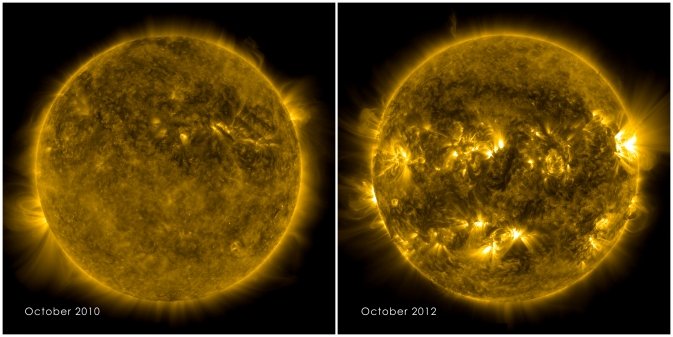
Image Credit: NASA/SDO
